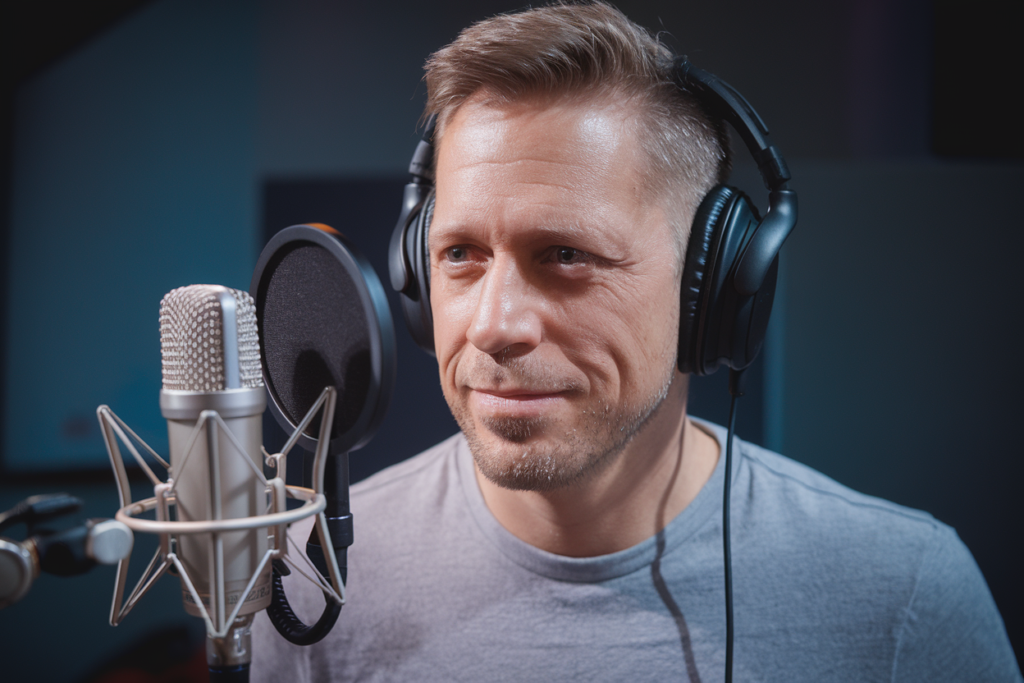Key Takeaways
- Diverse Accents: German accents vary significantly across regions, with each accent reflecting unique cultural and historical influences.
- Northern Characteristics: Accents from northern Germany, like Hamburg and Bremen, are marked by clear pronunciation and softer consonants, making them suitable for straightforward communication.
- Southern Melodies: Southern accents, particularly Bavarian, feature melodious intonations and unique vocabulary that can enhance emotional depth in storytelling.
- Central Blend: Central German accents combine features from both northern and southern speech patterns, providing a versatile sound ideal for diverse audiences.
- Cultural Influence: Local customs and traditions shape accent characteristics; understanding these variations is crucial when selecting voice talent for specific regional audiences.
- Phonetic and Vocabulary Differences: Each region has distinct phonetic traits and vocabulary that impact effective communication; recognizing these differences helps achieve authenticity in voiceover projects.
Ever wondered why a German speaker from Bavaria sounds so different from one in Berlin? The rich tapestry of German accents in different German regions reveals fascinating insights into culture, history, and identity. Each region boasts its unique twist on the language that can leave even native speakers scratching their heads.
Overview of German Accents
German accents vary significantly across different regions, showcasing the rich tapestry of linguistic diversity in the country. Each accent not only reflects local culture and history but also influences how native speakers communicate with one another.
Northern Accents
Northern accents, such as those from Hamburg and Bremen, are often marked by a clearer pronunciation and softer consonants. The Low German dialects in this region can sound quite distinct to outsiders, making some phrases challenging for even fluent speakers to understand.
Central Accents
Central Germany features accents like that of Hesse and Thuringia. These areas display a blend of characteristics from both northern and southern German speech patterns. You might notice unique vowel sounds that differ notably from standard High German.
Southern Accents
Southern accents include variations found in Bavaria and Swabia. Bavarian, for instance, is known for its melodious intonation and distinct vocabulary. Many find these accents charming yet complex; they often require familiarity to grasp fully.
Urban vs. Rural Differences
Urban centers like Berlin exhibit more standardized forms due to their diverse populations, while rural areas tend to preserve traditional dialects more rigorously. This urban-rural divide can affect how people interact with each other across generations.
Understanding these regional distinctions not only enhances your appreciation of the language but also aids communication efforts when working with voice actors or voiceover talent from various parts of Germany. Recognizing an accent’s origin can guide you in selecting the right voice artist for your project, ensuring they resonate authentically with your target audience.
Major Regional Accents
Germany boasts a rich tapestry of accents that reflect its diverse cultural landscape. Understanding these regional variations not only enhances communication but also helps you select the right voice talent for your projects.
Northern Accents
Northern accents, particularly from cities like Hamburg and Bremen, feature clear pronunciation and softer consonants. These traits often make them distinctive yet sometimes tricky for fluent speakers to grasp. The flat intonation found in these areas can add a refreshing clarity to voiceover work, making it ideal for educational content or corporate narratives. If you’re considering a Northern accent for your next project, expect a straightforward delivery that resonates with audiences.
Southern Accents
Southern accents encompass those from regions such as Bavaria and Swabia, known for their melodious intonation and unique vocabulary. The Bavarian dialect stands out with its charming lilt, while Swabian offers distinct phonetic twists that can enrich storytelling in voiceovers. When selecting a voice artist with a Southern accent, think about how the musical quality of their speech could enhance emotional depth in your content—perfect for commercials or animated characters where warmth is key.
Central Accents
Central accents arise from areas like Hesse and Thuringia, blending features from both northern and southern speech patterns. This mix creates unique vowel sounds that can bring an interesting dynamic to your audio projects. A central German accent often strikes a balance between clarity and character—ideal if you’re looking to appeal to diverse audiences without losing authenticity in your message. Choosing a voice actor from this region could provide versatility across various genres of voiceovers.
Understanding these major regional accents positions you well when sourcing voice over talent or deciding on the right tone for your projects. Each accent carries its own flavor, contributing significantly to the overall impact of any narrative you wish to convey.
Influence of Geography and Culture
German accents vary significantly across different regions, reflecting the unique geography and cultural influences that shape them. These regional distinctions play a vital role in how speakers communicate and express their identity.
Historical Context
The historical development of the German language contributed to the formation of distinct accents. Regional dialects emerged from various tribes and communities over centuries. For instance, areas like Bavaria retained older linguistic features due to geographic isolation, while urban centers experienced an influx of diverse populations, leading to more standardized speech patterns. This historical backdrop informs how voice actors approach regional accents; understanding these nuances enhances authenticity in their performances.
Cultural Variations
Cultural factors also influence accent characteristics. Festivals, traditions, and local customs contribute to distinct pronunciations and vocabulary choices in each region. In Bavaria, for example, you might hear a sing-song quality in speech that’s tied to folk traditions, while northern areas often showcase a more straightforward delivery style influenced by maritime culture. When selecting voice talent for projects targeting specific regional audiences, recognizing these cultural variations is crucial for ensuring effective communication and resonating with listeners on a deeper level.
Comparison of Accents
German accents vary significantly across regions, each offering unique phonetic and vocabulary characteristics. Understanding these differences can enhance your selection process when seeking voiceover talent.
Phonetic Differences
Phonetic variations in German accents contribute to the richness of the language. Northern accents, like those from Hamburg and Bremen, often feature clearer enunciation and softer consonants. This clarity makes them ideal for professional settings where straightforward communication is crucial. In contrast, southern accents—especially Bavarian—are known for their melodious intonation and pronounced vowels. These qualities can add emotional depth to voiceovers but might require a more nuanced understanding for effective interpretation.
Accents from central regions like Hesse bring a blend of northern precision and southern warmth. Here, you’ll encounter distinct vowel sounds that create a versatile sound profile suitable for diverse audiences. If you’re considering voice artists for projects requiring regional authenticity, pay attention to these phonetic traits—they play an essential role in how messages are conveyed.
Vocabulary Variations
Vocabulary also differs across German-speaking regions. Each area has its own set of expressions and terms that reflect local culture and tradition. For instance, Bavarian dialects may use words tied to local customs or festivals that aren’t commonly found in standard German. This unique vocabulary adds flavor to voiceovers but can pose challenges if not understood well by listeners outside the region.
In contrast, northern dialects tend to stick closer to standard German vocabulary while incorporating fewer regionalisms. This consistency often makes them easier for broader audiences to comprehend during voice-over projects aimed at national reach.
Selecting the right accent involves balancing these phonetic nuances with vocabulary familiarity based on your target audience’s preferences. When choosing voice actors or artists, consider how their accent aligns with your project’s message—cultural resonance matters deeply in establishing connections with listeners.
Conclusion
German accents are a fascinating reflection of the country’s rich cultural tapestry. By understanding these regional variations, you can appreciate the nuances that make each accent unique. Whether you’re interacting with native speakers or selecting voice talent for projects, recognizing the distinct characteristics of northern, central, and southern accents will enhance your communication efforts.
These accents not only convey information but also carry deep cultural significance. Embracing this diversity can lead to more meaningful connections and a greater appreciation for the language itself. As you explore German accents further, you’ll discover how they enrich conversations and provide insights into Germany’s vibrant identity.
Frequently Asked Questions
What are the main regional accents in German?
The main regional accents in German include northern accents from Hamburg and Bremen, central accents from Hesse and Thuringia, and southern accents like Bavarian and Swabian. Each accent reflects unique phonetic traits, vocabulary, and cultural influences.
How do German accents affect communication?
German accents can significantly impact communication by altering pronunciation, intonation, and vocabulary. Understanding these variations helps speakers connect more effectively with native audiences and enhances authenticity in voiceover work.
Why are some German accents challenging for speakers?
Some German accents can be puzzling for even fluent speakers due to distinct pronunciation patterns and vocabulary differences. For instance, Bavarian uses unique words while northern areas emphasize clearer consonants, making comprehension tricky without familiarity.
How does geography influence German accents?
Geography plays a vital role in shaping German accents. Rural areas tend to preserve traditional dialects due to isolation, while urban centers develop more standardized speech influenced by diverse populations.
What is the significance of accent selection in voice talent?
Selecting the right accent is crucial for voice talent as it ensures authenticity and resonates with specific regional audiences. The choice affects emotional delivery and connection with listeners based on cultural nuances inherent in each accent.







